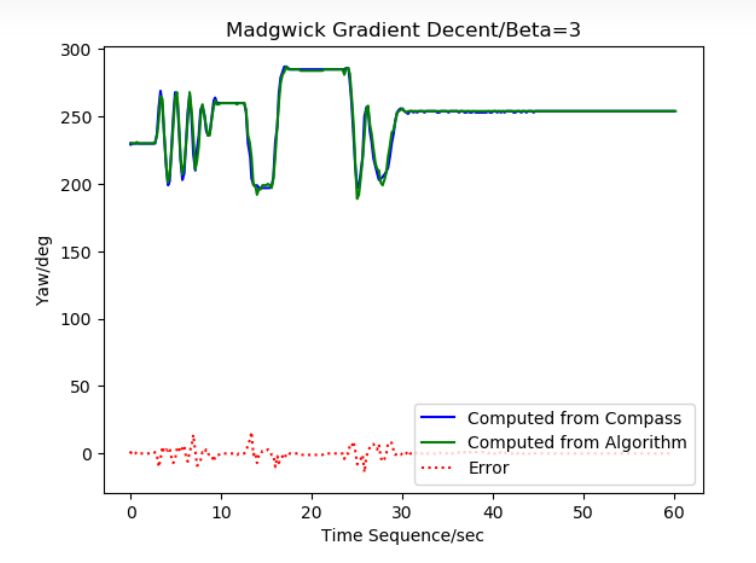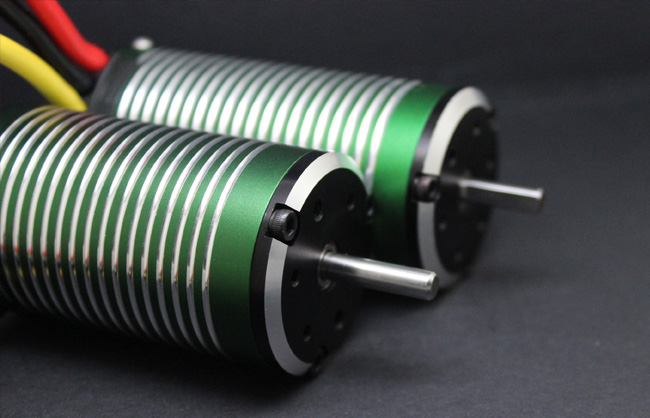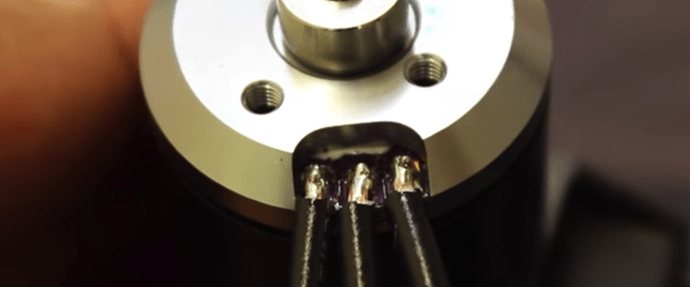INDUSTRY NEWS
The difference between brushed and brushless motors
The brush motor is the first type of motor that we have come across. The main structure of a brushed motor is a stator + rotor + brushes, which obtains its rotational torque through a rotating magnetic field and thus outputs kinetic energy. The brushes are in constant contact with the commutator, which acts as a conductor of electricity and phase change in the rotation.
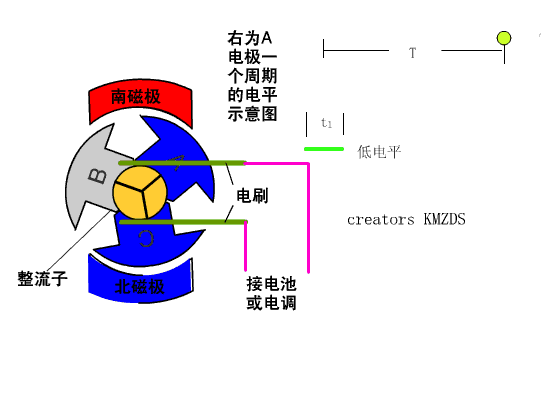
Brushed motors are mechanically commutated, the magnetic poles do not move and the coils rotate. When the motor is in operation, the coils and commutator rotate, the magnets and carbon brushes do not. The alternating change in the direction of the coil current is accomplished by the commutator and brushes that rotate with the motor.
In a brushed motor, this process is carried out by lining up the two power inputs of each group of coils, in turn, in a ring, separated from each other by insulating material, to form something like a cylinder, connected to the motor shaft. The power supply passes through two small columns made of carbon elements (carbon brushes), under spring pressure, from two specific fixed positions, pressing on two points on the ring-shaped cylinder of the power input of the coils above, giving a group of coils energised.
As the motor rotates, different coils or different poles of the same coil are energised at different times, so that the N-S pole of the coil generating the magnetic field has a suitable angular difference to the N-S pole of the nearest permanent magnet stator, and the magnetic fields are opposites attract and homogeneous repel, generating the force that drives the motor to rotate. The carbon electrodes slide on the coil terminals like brushes on the surface of an object, hence the name carbon "brushes".
Sliding against each other will rub the carbon brushes, resulting in wear and tear, requiring regular replacement of the carbon brushes; alternating between the carbon brushes and the coil terminals will result in electrical sparks, generating electromagnetic breakage and interfering with electronic equipment.
2. Brushless motor working principle
In a brushless motor, the phase change is left to the control circuit in the controller (generally Hall sensor + controller, more advanced technology is magnetic encoder) to complete.
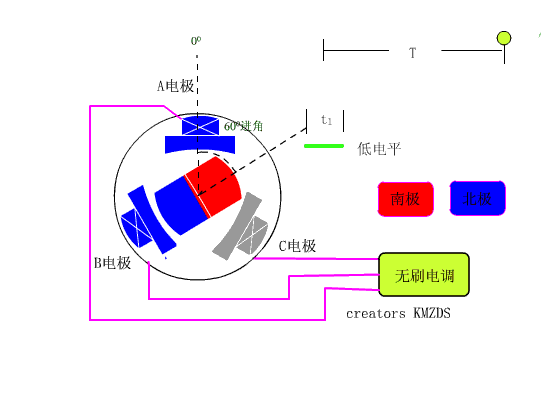
Brushless motors take electronic commutation, where the coil does not move and the magnetic poles rotate. Brushless motors, use a set of electronic devices to sense the position of the magnetic poles of the permanent magnets, through Hall elements, and based on this perception, use electronic circuits to switch the direction of the current in the coil at the right time to ensure that the correct direction of magnetic force is generated to drive the motor. The disadvantages of brushed motors are eliminated.
These circuits, are the motor controllers. The controller of a brushless motor can also achieve some functions that a brushed motor cannot, such as adjusting the power switching angle, braking the motor, reversing the motor, locking the motor and using the brake signal to stop supplying power to the motor. The electronic alarm lock for electric vehicles now makes full use of these functions.
Brushless DC motors consist of a motor body and a driver, and are a typical mechatronic product. As brushless DC motors operate in a self-controlled manner, they do not add another starting winding to the rotor like synchronous motors that start under heavy load with frequency regulation, nor do they produce oscillations and lost steps when the load changes suddenly.
3. Differences in speed control methods
In fact, the control of both motors are voltage regulation, only because the brushless DC uses electronic commutation, so to have digital control can be achieved, and brush DC is through the carbon brush commutation, the use of thyristor and other traditional analog circuit can be controlled, relatively simple.
1), brush motor speed control process is to adjust the motor power supply voltage high and low. The adjusted voltage and current is converted through the rectifier and brushes to change the strength of the magnetic field generated by the electrodes to change the speed of the purpose. This process is called variable voltage speed regulation.
2), brushless motor speed process is the motor power supply voltage remains unchanged, change the ESC control signal, through the microprocessor and then change the high-power MOS tube switching rate, to achieve the speed change. This process is called variable speed regulation.
4. Difference in performance
1, brush motor structure is simple, the development of long technology is mature
As early as the nineteenth century when the birth of the motor, the practical motor produced is the brushless form, that is, the AC squirrel cage asynchronous motor, this motor has been widely used after the generation of AC power. However, the asynchronous motor had many insurmountable defects that slowed the development of motor technology. In particular, brushless DC motors were not commercially available until recent years, along with the rapid advances in electronic technology, and are still, in essence, AC motors.
Soon after the brushless motor was created, the brush DC motor was invented. As the DC brush motor mechanism is simple, easy to produce and process, easy to maintain, easy to control; DC motor also has a fast response, large starting torque, from zero speed to rated speed with the performance of rated torque, so as soon as it was introduced, it has been widely used.
2, DC brush motor response speed, starting torque is large
DC brush motors have a fast starting response, high starting torque, smooth speed change, almost no vibration from zero to maximum speed, and can drive a larger load when starting. Brushless motor starting resistance is large (inductive resistance), so the power factor is small, the starting torque is relatively small, there is a humming sound when starting, and accompanied by strong vibration, driving a smaller load when starting.
3, DC brush motor running smoothly, good starting and braking effect
Brush motor is through the regulation of voltage speed, so the starting and braking smooth, constant speed operation is also smooth. Brushless motor is usually digital frequency control, first AC into DC, DC into AC, through the frequency change to control the speed, so brushless motor in the starting and braking operation is not smooth, vibration, only when the speed is constant will be smooth.
4, DC brush motor control accuracy is high
DC brush motors are usually used together with gearboxes and decoders, making the output power of the motor greater and the control precision higher. The control precision can reach 0.01 mm, allowing the moving parts to stop almost anywhere they want. All precision machine tools are controlled with DC motor precision. Brushless motors are not smooth in starting and braking, so the moving parts will stop in a different position each time and must be stopped in the desired position only by means of a positioning pin or limiter.
5、Brush DC motors have low cost of use and easy maintenance
Due to the simple structure of DC brush motors, low production costs, many manufacturers, technology is more mature, so the application is also more widespread, such as factories, processing machine tools, precision instruments, etc., if the motor failure, only need to replace the carbon brush can be, each carbon brush only a few dollars, very cheap. Brushless motor technology is not mature, the price is higher, the application is limited, mainly should be in constant speed equipment, such as inverter air conditioners, refrigerators, etc., brushless motor damage can only be replaced.
6、No brush, low interference
Brushless motor in addition to the brush, the most direct change is no brush motor operation generated by electric sparks, so as to greatly reduce the spark of interference with remote radio equipment.
7、Low noise, smooth running
Brushless motor without brushes, friction is greatly reduced when running, running smoothly, noise will be much lower, this advantage is a huge support for the stability of the model operation.
8. Long life and low maintenance costs
With fewer brushes, the wear and tear of brushless motors is mainly on the bearings. From a mechanical point of view, brushless motors are almost a maintenance-free motor, and only some dust removal maintenance is needed when necessary.
